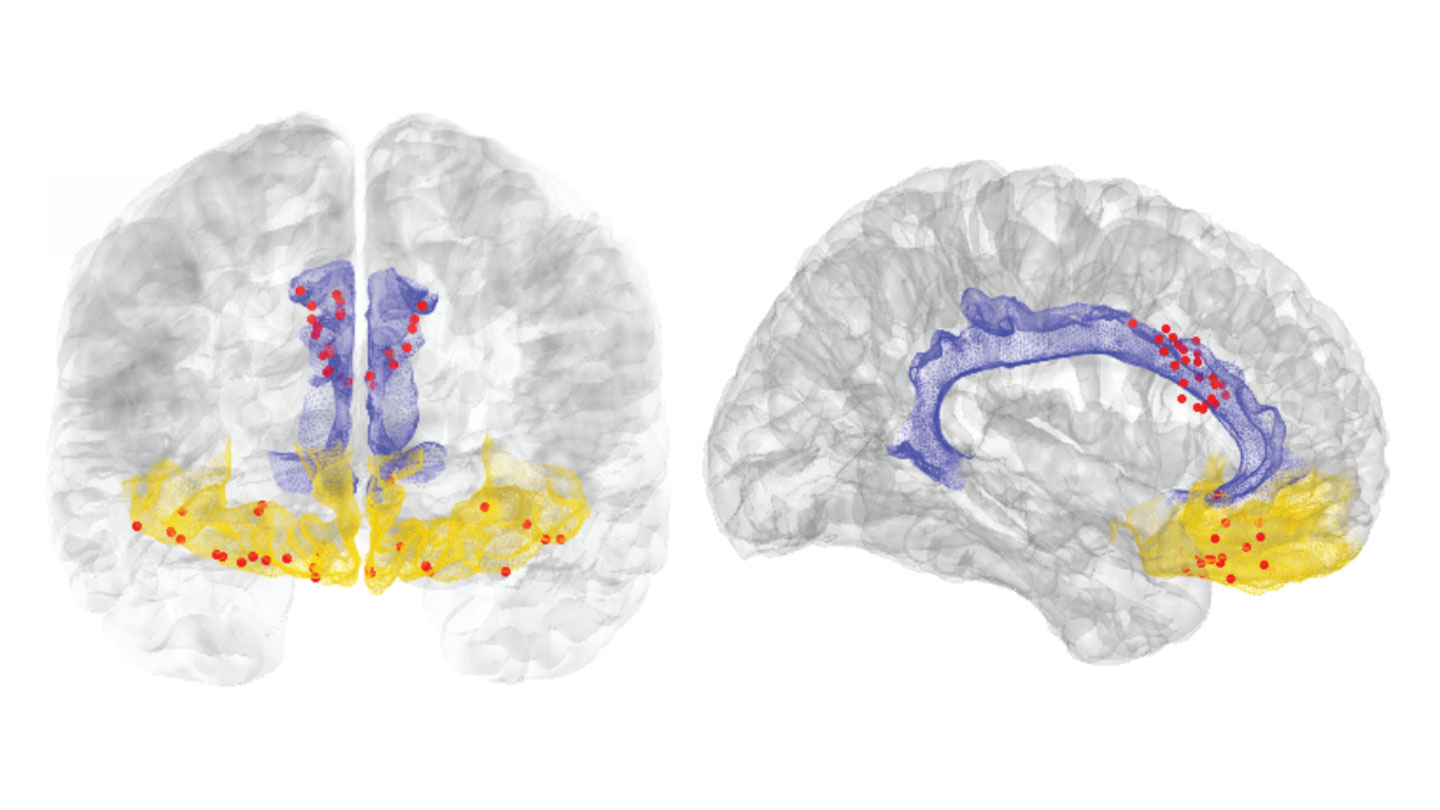Brain implants have revealed a signature for chronic pain |
 |
| Every print subscription comes with full digital accessIn a new study, implanted electrodes (red dots) listened to activity in people with chronic pain in two brain regions: the anterior cingulate cortex, or ACC (purple), and the orbitofrontal cortex, or OFC (yellow).P. ShirvalkarBy Laura SandersScientists can see chronic pain in the brain with new clarity.Over months, electrodes implanted in the brains of four people picked up specific signs of their persistent pain. This detailed view of chronic pain, described May 22 in , suggests new ways to curtail the devastating condition. The approach “provides a way into the brain to track pain,” says Katherine Martucci, a neuroscientist who studies chronic pain at Duke University School of Medicine.Chronic pain is incredibly common. In the United States from 2019 to 2020, more adults were diagnosed with chronic pain than with diabetes, depression or high blood pressure, researchers reported May 16 in . Chronic pain is also incredibly complex, an amalgam influenced by the body, brain, context, emotions and expectations, Martucci says. That complexity makes chronic pain seemingly invisible to an outsider, and very difficult to treat.One treatment approach is to stimulate the brain with electricity. As part of a clinical trial, researchers at the University of California, San Francisco implanted four electrode wires into the brains of four volunteers with chronic pain. These electrodes can both monitor and stimulate nerve cells in two brain areas: the orbitofrontal cortex, or OFC, and the anterior cingulate cortex, or ACC. The OFC isn’t known to be a key pain influencer in the brain, but this region has lots of neural connections to pain-related areas, including the ACC, which is thought to be involved in how people experience pain.But before researchers stimulated the brain, they needed to know how chronic pain was affecting it. For about 3 to 6 months, the implanted electrodes monitored brain signals of these people as they went about their lives. During that time, the participants rated their pain on standard scales two to eight times a day.Using sophisticated machine learning approaches, researchers then linked each person’s pain ratings to their brain activity patterns, ultimately landing on a signature of each person’s chronic pain.In many ways, the patterns were unique to each person, but there was overlap: Brain activity in the OFC, an area at the front of the brain just behind the eyes, tracked with people’s chronic pain levels. Some unexpected pain patterns cropped up along the way, too. Two volunteers’ pain fluctuated on a roughly three-day cycle, for instance.Brain activity in the OFC could represent a solid biomarker of chronic pain, a signal that could both help doctors track treatment responses and serve as new targets for treatment, says neuroscientist Chelsea Kaplan of the Chronic Pain and Fatigue Research Center at the University of Michigan in Ann Arbor.Get great science journalism, from the most trusted source, delivered to your doorstep.The study was done on only four people, three with pain from a stroke and one with phantom limb pain after a leg amputation. “We would need to know if these findings can generalize to other patients and pain conditions,” Kaplan says.If brain activity patterns end up being common across people with chronic pain, they might one day be used to measure pain in people who can’t communicate, Martucci says. That includes people in nonresponsive states such as those with locked-in syndrome ().Yet the goal of identifying reliable markers of chronic pain is not necessarily to establish whether a person is in pain, or serve as a yes-no diagnostic test, study coauthor Prasad Shirvalkar, a neurologist at UCSF, said in a May 18 news briefing. Instead, it’s to guide treatment. Shirvalkar and his colleagues are now conducting a clinical trial that involves stimulating peoples’ brains to treat chronic pain. “I think of [the biomarker] as one tool to actually help treat a patient, to actually make them feel more seen.”Questions or comments on this article? E-mail us at feedback@sciencenews.org | Reprints FAQP. Shirvalkar . First-in-human prediction of chronic pain state using intracranial neural biomarkers. . Published online May 22, 2023. doi: 10.1038/s41593-023-01338-z.Laura Sanders is the neuroscience writer. She holds a Ph.D. in molecular biology from the University of Southern California.Our mission is to provide accurate, engaging news of science to the public. That mission has never been more important than it is today. As a nonprofit news organization, we cannot do it without you. Your support enables us to keep our content free and accessible to the next generation of scientists and engineers. Invest in quality science journalism by donating today.Science News was founded in 1921 as an independent, nonprofit source of accurate information on the latest news of science, medicine and technology. Today, our mission remains the same: to empower people to evaluate the news and the world around them. It is published by the Society for Science, a nonprofit 501(c)(3) membership organization dedicated to public engagement in scientific research and education (EIN 53-0196483). © Society for Science & the Public 2000–2023. All rights reserved. Subscribers, enter your e-mail address for full access to the archives and digital editions.Not a subscriber? Become one now. |
May 23th, 2023 |
| source |